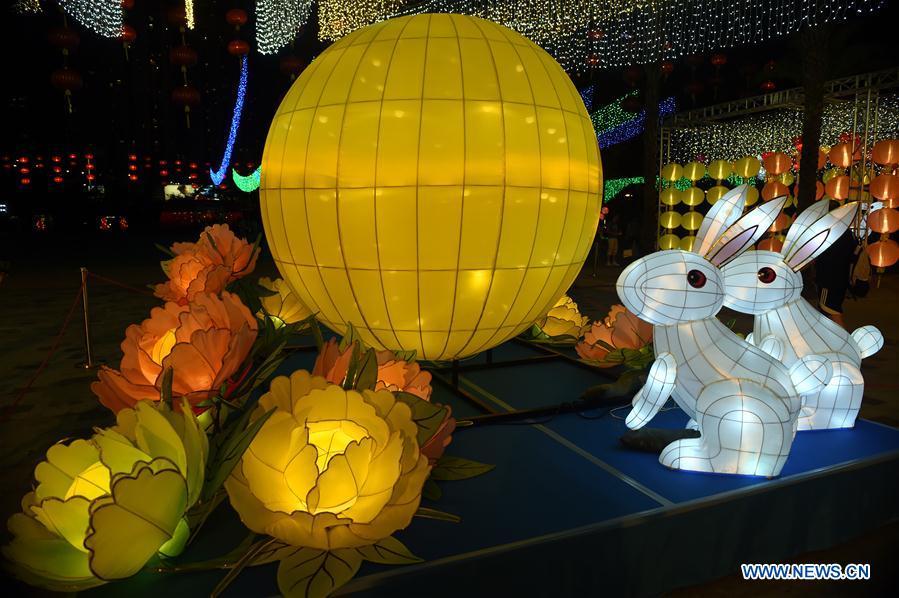
Nowadays, some traditional customs are disappearing, and the younger generation have their own ways to spend the Mid-Autumn Festival, such as shopping, going to a party, or traveling, seemingly forgetting the traditional customs of the festival. They drink the sweet osmanthus-flavored wine to echo the festival atmosphere. People gather together to appreciate the moon in which Wu Gang, who chases Chang'e, is cutting a sweet-scented osmanthus tree outside the Moon Palace, according to a legend. Drinking Osmanthus fragrance wine at Mid-Autumn Festival implies sweetness, wealth and auspiciousness, and prosperity of the family.

Osmanthus fragrance is a symbol of prosperity and auspiciousness. Osmanthus-flavored wine is a gift during this season. Osmanthus flowers open and spread a sweet scent in autumn. Nowadays, many families in Guangzhou eat fried river snails during the festival.

Therefore, their meat is especially fat and delicious. River snails are rich in vitamin A, which is an important substance in visual pigments.Īround the festival, there are no small river snails in the abdomens of larger river snails. People believe that eating river snails in the Mid-Autumn Festival can make the eyes clear. Whoever eats vegetables with sweet dew on this night will be healthy and happy.Īlso, women and girls express their adoration to their favorite young men by this way. There is a legend that during the Mid-Autumn Festival, the fairy in the Moon Palace will go down to the human world to spread sweet dew on the vegetables. The rabbit figure once was an offering to worship the moon, but later, it became a popular children's toy.Īmong the Dong ethnic group in Central China's Hunan province, it is the custom for young ladies to steal vegetables on Mid-Autumn Festival night. Some people imitate opera characters and carve the rabbit in a stylized way, such as a warrior with a golden helmet and armor, riding lions, elephants and other beasts of prey, or some riding peacocks, cranes and other birds. Based on an image of of the Jade Rabbit from the story of Chang'e in the Moon Palace, a clay rabbit is personalized and made in an artistic form. The clay rabbit is a traditional handicraft in Beijing at Mid-Autumn Festival. When all the pagodas are built up, someone will shout, "Ignite the fire!" Then, the firewood in the pagodas is lit, and the red flames rise and sparks explode, through which people express the joy of harvest in autumn. The pagodas are hollow and are stuffed with firewood. When night falls, people gather together in an empty place, and pick up broken bricks and tiles to pile up several pagodas, large and small. In some places, burning pagodas during the Mid-Autumn Festival is another tradition. Children write good wishes on the lanterns and let them fly up into the sky. They also make Kongming lanterns, which can fly because the burning candles heat the air in the lantern. Park personnel will hang up colorful lanterns, which provide a beautiful scene at night. They make the lanterns in different shapes to be hung on trees or houses, or floated on rivers. People usually make colorful lanterns to decorate the beautiful night.
#Chinese mid autumn festival 2019 full
On the night of the Mid-Autumn Festival, the sky is clear as water, and the moon is full and bright like a mirror. Today, watching the tide on the Qiantang River is still a characteristic event for the festival.

Many famous ancient poets, like Su Shi in the Song Dynasty (960-1279), wrote about the grand occasion in their poems. It had been recorded in detail since the Han Dynasty (206 BC-220). The tide is very torrential and magnificent and attracts many onlookers. In ancient times, watching the tide on the Qiantang River in East China's Zhejiang province was another grand event of Mid-Autumn Festival. In some old towns or tourist cities, people will hold a ceremony to worship the moon in a square, park, or street, but this is more like a performance. It's rare to see families worshiping the moon in big cities. Nowadays, this tradition is disappearing. On that day, people put the "god of the moon" sign, peaches, watermelons, mooncakes and other offerings on a table at home or outdoors, and then knelt down and kowtowed one by one, praying for blessings from the "god of the moon". Since ancient times, there has been a tradition of worshiping the moon in Mid-Autumn Festival in China, which stems from the deification of the moon by the ancients. In fact, besides these two traditions, there are many others. It's a time when families come together to appreciate the full moon and eat mooncakes during the festival. Mid-Autumn Festival is the second grandest festival in China after Chinese New Year.


 0 kommentar(er)
0 kommentar(er)
